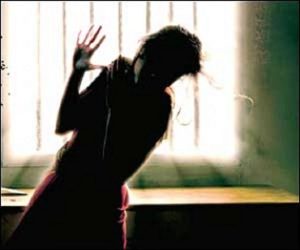By Abdul Razaque Channa
Pakistan is a country where men rule over almost all the functional mechanisms of the country’s parliamentary and legislative systems. Statistically, women make up 20.29 percent of representatives in the current National Assembly. This significant number makes Pakistan the leader compared to other South Asian states. However, to our disappointment, there is not a single woman in any cabinet — federal or provincial — as a chief minister, speaker, deputy speaker, federal minister, senior provincial minister, advisor or special assistant to the prime minister.
General elections were held on May 11, 2013 in all of Pakistan to elect the new people’s representatives. After the election, successful parties formed their government at the federal and provincial levels. Currently, there are 340 seats in the National Assembly of Pakistan: 270 general seats, 60 reserved seats for women and 10 seats for non-Muslims. Altogether, women hold 69 seats in the National Assembly of whom 60 are on reserved seats, eight on general seats (three from Punjab and five from Sindh) and one is on a minorities reserved seat.
In fact, the national and provincial cabinets reflect the reality of Pakistan as a patriarchal state where men possess the ultimate power to govern. At the federal level, the cabinet is composed of various powerful portfolios headed by the prime minister. The current federal cabinet includes the prime minister, speaker, deputy speaker, 20 federal ministers, three advisors and five special assistants to the prime minister. There is not a single woman in any of these positions — all these portfolios are held by men. However, the cabinet has 10 ministers of state and 14 parliamentary secretaries out of which two are women, one in each designation. Hence, with regard to a total of 55 cabinet positions, we can see that women barely exist in the power structure of the federal government
At the provincial level, the situation is not that different, irrespective of the different political parties holding power such as the PML-N in Punjab, PPP in Sindh, PTI along with Jamaat-i-Islami and Awami Jamhuri Ittehad in Khyber Pakhtunkhwa, and a coalition government in Balochistan. Having different visions and manifestos may differentiate the parties at some level, however, patriarchal power seems a shared vision that these parties all exercised while composing their cabinets.
In Punjab, the cabinet is composed of 63 members out of which 56 are men and seven are women. Apart from the chief minister (CM), speaker, deputy speaker and one advisor to the CM (all men), there are 21 provincial ministers, of which two are women and there are 38 parliamentary secretaries of which five are women.
In Sindh, there are three women in a cabinet of 41 members. There are 17 ministers, 12 special assistants and five coordinators to the CM of which one in each designation is a woman. There are two advisors, one political secretary and four parliamentary secretaries to the CM but, unfortunately, there is not a single woman with any similar portfolio.
In Khyber Pakhtunkhwa, the cabinet is composed of 39 members, including the CM, speaker and deputy speaker of which 32 are men and seven are women. There are five women parliamentary secretaries out of 17, one as an advisor to the CM out of five and one as special assistant to the CM out of six. There is no female provincial minister in the current PTI-led government in Khyber Pakhtunkhwa, which has nine male provincial ministers.
Regretfully, Balochistan has not yet fully composed its provincial cabinet. However, the existing provincial cabinet has 16 members, including the CM, speaker, deputy speaker, 10 ministers and three advisers to the CM. Men hold all these portfolios. This situation makes Balochistan the only province of Pakistan with no portfolio for any of its female members of parliament.
In conclusion, there are 214 individuals holding cabinet or cabinet level portfolios at the moment in the national and four provincial cabinets of Pakistan. These 214 individuals hold various degrees of power associated with their portfolios. There are just 21 women with portfolios, making around 9.81 percent of total cabinet members. It is also pertinent to mention that, while women possess a share of 9.81 percent in portfolios, none of them have any significant positions within either the national or provincial cabinets. In fact, women are not only under-represented in cabinet formation, they have been assigned less influential portfolios by their party strong men, keeping in mind their ‘softer’ gender.
Daily Times


